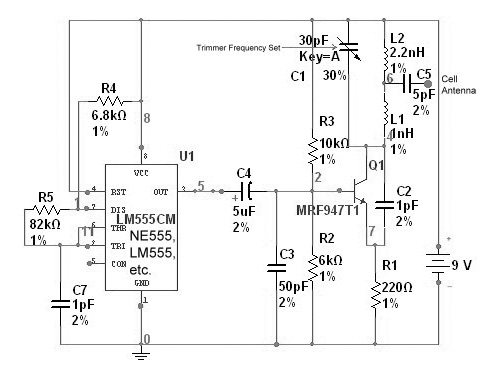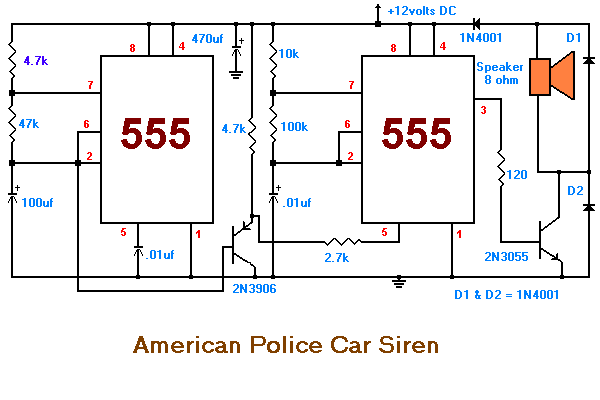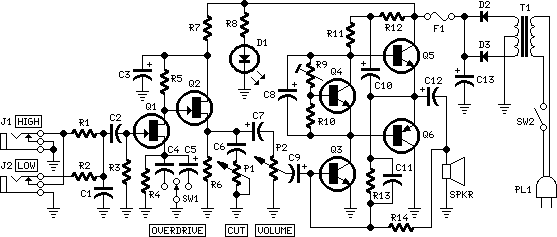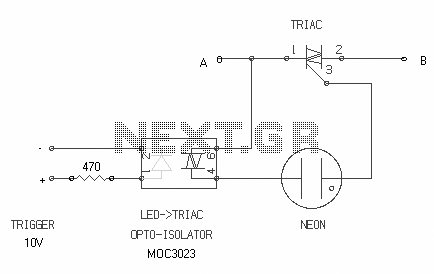
Korg Releases monotribe Drum Schematics
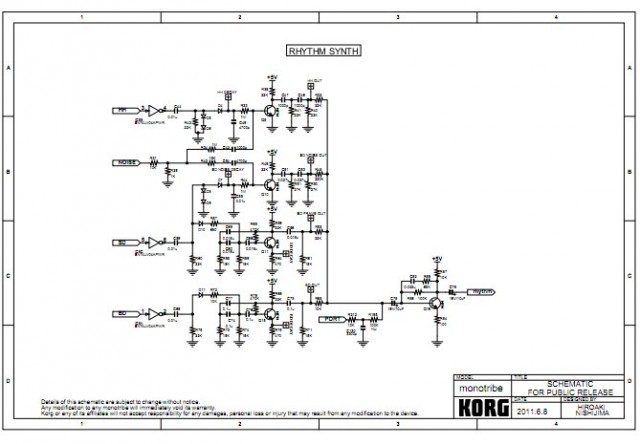
Korg has released schematics for the analog drum synthesis section of its Monotribe synthesizer and step-sequencing rhythm machine. The schematics focus on the components responsible for generating drum sounds, which are the most interesting and modifiable aspects of the device. To obtain the download, users must complete a form providing their name and address, acknowledging the waiver of warranty and liability against Korg. The provided address is not used for any purpose, provided the newsletter option is unchecked. After submission, users receive a high-resolution PDF of the schematics, which are publicly marked. The design, created by Hiroaki Nishijima, is a minimal set of analog circuits for sound production, making it suitable for modifications. Instead of voiding a Monotribe's warranty, users may consider breadboarding the circuit, allowing for easy variations on the original layout. Notably, the noise source is ingeniously linked to hi-hat and snare sounds. Modifications have been attempted with MIDI, though results have been inconsistent. The potential for new drum sounds and external drum circuits exists, reflecting Korg's approach reminiscent of earlier sound and music electronics, where sharing schematics was common. Although Korg has not explicitly encouraged copying or modifying their designs, releasing the schematics indicates a level of comfort with such possibilities. Users can learn about analog drum synthesis, but creating a direct clone of the Monotribe is unlikely, as Korg retains the capability for mass production. While the schematics are not open-source hardware, they serve as a valuable resource for learning and experimentation. Additional discussions around MIDI modifications highlight both the physical and electronic aspects, including limitations that explain why MIDI was not included in the original design. Various opinions on the Monotribe's design and functionality are also noted, emphasizing the balance between simplicity and hackability. The circuit offers educational value and opportunities for modification, although it may not fulfill all users' needs for flexible drum sounds.
The Monotribe synthesizer features a straightforward architecture that allows users to explore the fundamentals of analog drum synthesis. The analog circuits consist of oscillators, filters, and envelope generators, with each component contributing to the overall sound generation. The drum sounds are produced through a combination of noise generation and oscillation, with the noise source being a critical element for creating percussive effects. The elegant design minimizes complexity, making it accessible for users interested in modifying or learning from the circuit.
The schematics illustrate the connections between various components, including the voltage-controlled amplifier (VCA) and the decay control circuitry, which is implemented through a potentiometer or resistor. This simplicity, while effective, can lead to issues such as noise bleed-through, which is a common challenge in analog designs. The reliance on a transistor for VCA functionality, activated by a DC current, exemplifies the design's minimalist approach but may introduce unwanted artifacts in the output signal.
The potential for modification is further enhanced by the presence of a hidden MIDI port on the board, which allows for integration with other MIDI devices, although users have reported mixed results regarding timing accuracy. This aspect of the design encourages experimentation, as users can explore various configurations and modifications to achieve desired sound characteristics.
In summary, the release of the Monotribe's schematics opens up avenues for learning and experimentation in analog sound synthesis. Users are encouraged to utilize the provided information to gain insights into circuit design and sound generation, fostering a deeper understanding of electronic music production. The balance of simplicity and modifiability positions the Monotribe as an intriguing platform for both novice and experienced electronic musicians.As they did with the monotron synthesizer, Korg has quietly released schematics for its the analog drum synthesis portion of its monotribe synth and step-sequencing rhythm machine. You just see the bits that make the drum sounds, but that`s the interesting and modifiable part. In order to grab the download, you`ll need to fill out a form with your name and address, saying you acknowledge you`re voiding the warranty and that you won`t turn around and sue Korg. That address doesn`t get used for anything, though, so long as you uncheck the newsletter box. Once you do, you get a high-res PDF (low-res image above) with the schematics, marked public. (Liability I know is an important issue. You never know; you might swallow the drum circuits and then sue Korg for feeling ill afterwards. Or something. Ask a lawyer. ) As for the design itself, it`s a notably simple design by Hiroaki Nishijima, an elegantly-minimal set of analog circuits for producing sound.
As such, it should be ripe for modification. In fact, the first thing I`d be inclined to do is, rather than void a monotribe`s warranty, simply breadboard this circuit, which would make for exceedingly easy variations on the same basic layout. You might even wind up with something else. (One nice touch in the design: look at how the noise source is cleverly and necessarily linked to hat and snare sounds.
) Mods have also worked with MIDI a port is hidden on the board but apparently with sometimes-disappointing timing results. More promising is the thought of new drum sounds, and even some breadboarded drum circuits outside the monotribe itself.
And that`s what I think is admirable about Korg`s approach: in the earlier days of sound and music electronics, publishing these kinds of schematics was the norm. As opposed to today`s litigious age, it was more or less assumed that straightforward ideas would be copied and modified.
Korg hasn`t said they`re encouraging that kind of behavior, but by releasing the schematics, they at least acknowledge that they`re unafraid of that potential scenario. The point is, you wouldn`t come up with a cloned monotribe you`d simply learn something about analog drum synthesis, then move on to something that`d be quite different.
Korg remains the company with the wherewithal to produce the thing en masse, anyway. It`s not open source hardware, mind, so there`s a gray area as far as your ability to use the circuit, but that shouldn`t stop you from wiring this up and learning from it. An extensive, extensive post on MIDI modifications how to do it, physically and electronically, as well as some of the limitations (which in turn partly explain why this didn`t ship with MIDI): In the interest of fairness, Chris Randall posted what I thought was a thought-provoking review of the monotribe.
Keeping in mind Chris was apparently a great fan of the simpler, cheaper, smaller monotron synth and produced an album with it / see link at bottom his review of the monotribe and its bare-bones analog drums was pretty brutal. Chris isn`t one to mince words or be especially diplomatic, but it`s worth reading what he has to say.
He also predicts I`ll like something just like this story. But it`s worth considering all sides of this little box. And despite what Chris says about my own perspective, I still believe for real modification, open source hardware is best not that all hardware need be open source, but rather that for hardware you want people to modify, the open source license is a useful tool. I also think that it`s okay to just use gear and not always modify it; playing instruments is great, too, speaking even personally.
That said, I still think Korg releasing schematics is a big deal, and I`m enjoying getting inside this particular design. And for the record, Chris still put some monotribe sounds into his music. But that`s just the rhythm section Would`ve been nice if they had released schematics for the oscillator and filter etc.
But since these very points are marked on the board, I`m guessing that they already decided beforehand what to release and not, unless the omission of the other things is an oversight. monomodder has already documented these points. Fairly simple: Just * decay to ground through a potentiometer or resistor. What strikes me with the noise part of the schematic is how simple the "VCA" is. And when I see this, I understand why there`s so much noise bleed-through. They just rely on the transistor to be conductive when you put a DC current through it. Elegant in all its simplicity, but imperfect. I`m planning to reverse engineer more of the design, for example to see if you can do something about that horrible click that happens when you release a note.
However, I won`t be able to do that until at least two weeks from now, but stay tuned. Take a step back. Is it not a little funny that, in a world of endless banks of samples, people feel the need to mod the monotribe My thought is: If you really wanted more flexible drum sounds maybe this isn`t the device for you. Its appeal lies in its simplicity alone. Chad: Simplicity, sure, but also hackability. Monotron and now to some degree `tribe was marketed as a hackable device. I think it`s nice if you want to tinker around with electronics but not build something from scratch.
@nitro2k01/@Chad: I look at it a little differently. Basically, you`ve got a simple circuit here that you can learn from and modify. The primary reason to do so would be to learn something, to experience the way in which this circuit produces a sound. There`s no musical reason you need this particular circuit, no. That said, there`s also no reason you need to look at this schematic and mod the monotribe; you could just as easily lay it out on a breadboard, so while I`m sure KORG isn`t going to say this you don`t actually need a monotribe for this schematic to be useful.
(there`s a reason why we release *source code* on the MeeBlip and not just a schematic you have to know what`s going on inside the black box of the microcontroller!) Korg kicks ass and has a good set of balls on them for doing this sort of thing with their products. It shows they know their market pretty well. It also gives hope to the idea that they`ll do some larger analogue products. NICE! I`m really starting to feel a `Bromance` between Korg and I. So far I`ve done the Midi mod and am EXTREMELY pleased with the results (Haven`t stopped the acidic basslines for days), but because I use a Distortion pedal on the output for the synth, I haven`t really been able to use the drums unless I multitrack.
This weekends project is the Drum Output Mod to provide for a separate drum mix. Oh yeah, and the MonotribeKaossPad3 combo is pure villany! Ready to rave with only 2 boxes Yep I think this is good, because the drum sectiic is copyright Korg. Arect. 🔗 External reference
The Monotribe synthesizer features a straightforward architecture that allows users to explore the fundamentals of analog drum synthesis. The analog circuits consist of oscillators, filters, and envelope generators, with each component contributing to the overall sound generation. The drum sounds are produced through a combination of noise generation and oscillation, with the noise source being a critical element for creating percussive effects. The elegant design minimizes complexity, making it accessible for users interested in modifying or learning from the circuit.
The schematics illustrate the connections between various components, including the voltage-controlled amplifier (VCA) and the decay control circuitry, which is implemented through a potentiometer or resistor. This simplicity, while effective, can lead to issues such as noise bleed-through, which is a common challenge in analog designs. The reliance on a transistor for VCA functionality, activated by a DC current, exemplifies the design's minimalist approach but may introduce unwanted artifacts in the output signal.
The potential for modification is further enhanced by the presence of a hidden MIDI port on the board, which allows for integration with other MIDI devices, although users have reported mixed results regarding timing accuracy. This aspect of the design encourages experimentation, as users can explore various configurations and modifications to achieve desired sound characteristics.
In summary, the release of the Monotribe's schematics opens up avenues for learning and experimentation in analog sound synthesis. Users are encouraged to utilize the provided information to gain insights into circuit design and sound generation, fostering a deeper understanding of electronic music production. The balance of simplicity and modifiability positions the Monotribe as an intriguing platform for both novice and experienced electronic musicians.As they did with the monotron synthesizer, Korg has quietly released schematics for its the analog drum synthesis portion of its monotribe synth and step-sequencing rhythm machine. You just see the bits that make the drum sounds, but that`s the interesting and modifiable part. In order to grab the download, you`ll need to fill out a form with your name and address, saying you acknowledge you`re voiding the warranty and that you won`t turn around and sue Korg. That address doesn`t get used for anything, though, so long as you uncheck the newsletter box. Once you do, you get a high-res PDF (low-res image above) with the schematics, marked public. (Liability I know is an important issue. You never know; you might swallow the drum circuits and then sue Korg for feeling ill afterwards. Or something. Ask a lawyer. ) As for the design itself, it`s a notably simple design by Hiroaki Nishijima, an elegantly-minimal set of analog circuits for producing sound.
As such, it should be ripe for modification. In fact, the first thing I`d be inclined to do is, rather than void a monotribe`s warranty, simply breadboard this circuit, which would make for exceedingly easy variations on the same basic layout. You might even wind up with something else. (One nice touch in the design: look at how the noise source is cleverly and necessarily linked to hat and snare sounds.
) Mods have also worked with MIDI a port is hidden on the board but apparently with sometimes-disappointing timing results. More promising is the thought of new drum sounds, and even some breadboarded drum circuits outside the monotribe itself.
And that`s what I think is admirable about Korg`s approach: in the earlier days of sound and music electronics, publishing these kinds of schematics was the norm. As opposed to today`s litigious age, it was more or less assumed that straightforward ideas would be copied and modified.
Korg hasn`t said they`re encouraging that kind of behavior, but by releasing the schematics, they at least acknowledge that they`re unafraid of that potential scenario. The point is, you wouldn`t come up with a cloned monotribe you`d simply learn something about analog drum synthesis, then move on to something that`d be quite different.
Korg remains the company with the wherewithal to produce the thing en masse, anyway. It`s not open source hardware, mind, so there`s a gray area as far as your ability to use the circuit, but that shouldn`t stop you from wiring this up and learning from it. An extensive, extensive post on MIDI modifications how to do it, physically and electronically, as well as some of the limitations (which in turn partly explain why this didn`t ship with MIDI): In the interest of fairness, Chris Randall posted what I thought was a thought-provoking review of the monotribe.
Keeping in mind Chris was apparently a great fan of the simpler, cheaper, smaller monotron synth and produced an album with it / see link at bottom his review of the monotribe and its bare-bones analog drums was pretty brutal. Chris isn`t one to mince words or be especially diplomatic, but it`s worth reading what he has to say.
He also predicts I`ll like something just like this story. But it`s worth considering all sides of this little box. And despite what Chris says about my own perspective, I still believe for real modification, open source hardware is best not that all hardware need be open source, but rather that for hardware you want people to modify, the open source license is a useful tool. I also think that it`s okay to just use gear and not always modify it; playing instruments is great, too, speaking even personally.
That said, I still think Korg releasing schematics is a big deal, and I`m enjoying getting inside this particular design. And for the record, Chris still put some monotribe sounds into his music. But that`s just the rhythm section Would`ve been nice if they had released schematics for the oscillator and filter etc.
But since these very points are marked on the board, I`m guessing that they already decided beforehand what to release and not, unless the omission of the other things is an oversight. monomodder has already documented these points. Fairly simple: Just * decay to ground through a potentiometer or resistor. What strikes me with the noise part of the schematic is how simple the "VCA" is. And when I see this, I understand why there`s so much noise bleed-through. They just rely on the transistor to be conductive when you put a DC current through it. Elegant in all its simplicity, but imperfect. I`m planning to reverse engineer more of the design, for example to see if you can do something about that horrible click that happens when you release a note.
However, I won`t be able to do that until at least two weeks from now, but stay tuned. Take a step back. Is it not a little funny that, in a world of endless banks of samples, people feel the need to mod the monotribe My thought is: If you really wanted more flexible drum sounds maybe this isn`t the device for you. Its appeal lies in its simplicity alone. Chad: Simplicity, sure, but also hackability. Monotron and now to some degree `tribe was marketed as a hackable device. I think it`s nice if you want to tinker around with electronics but not build something from scratch.
@nitro2k01/@Chad: I look at it a little differently. Basically, you`ve got a simple circuit here that you can learn from and modify. The primary reason to do so would be to learn something, to experience the way in which this circuit produces a sound. There`s no musical reason you need this particular circuit, no. That said, there`s also no reason you need to look at this schematic and mod the monotribe; you could just as easily lay it out on a breadboard, so while I`m sure KORG isn`t going to say this you don`t actually need a monotribe for this schematic to be useful.
(there`s a reason why we release *source code* on the MeeBlip and not just a schematic you have to know what`s going on inside the black box of the microcontroller!) Korg kicks ass and has a good set of balls on them for doing this sort of thing with their products. It shows they know their market pretty well. It also gives hope to the idea that they`ll do some larger analogue products. NICE! I`m really starting to feel a `Bromance` between Korg and I. So far I`ve done the Midi mod and am EXTREMELY pleased with the results (Haven`t stopped the acidic basslines for days), but because I use a Distortion pedal on the output for the synth, I haven`t really been able to use the drums unless I multitrack.
This weekends project is the Drum Output Mod to provide for a separate drum mix. Oh yeah, and the MonotribeKaossPad3 combo is pure villany! Ready to rave with only 2 boxes Yep I think this is good, because the drum sectiic is copyright Korg. Arect. 🔗 External reference

